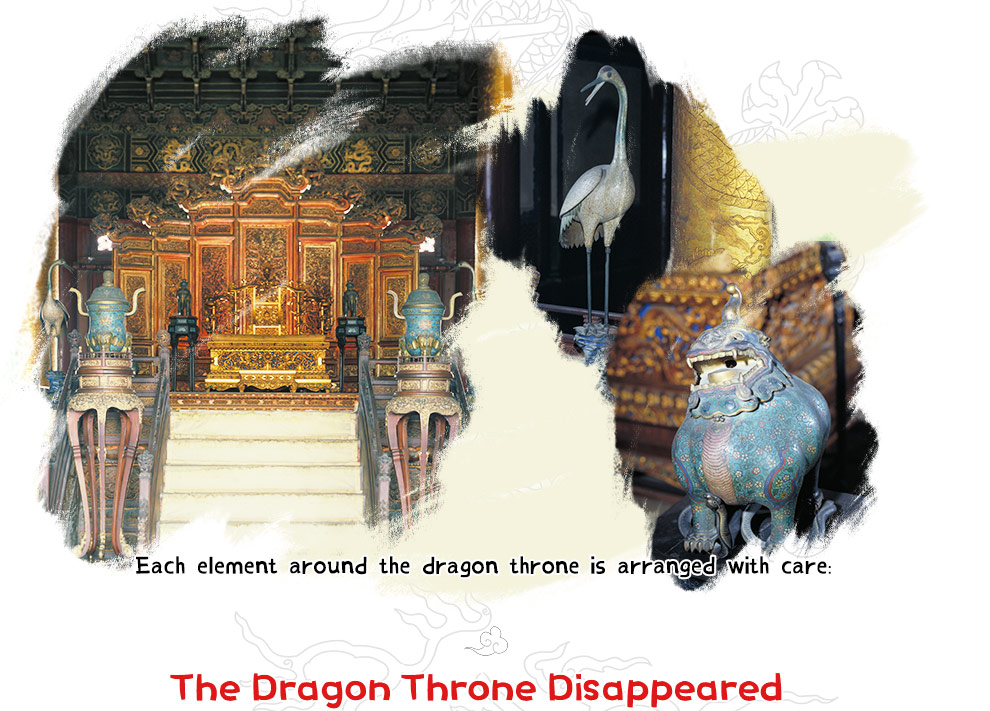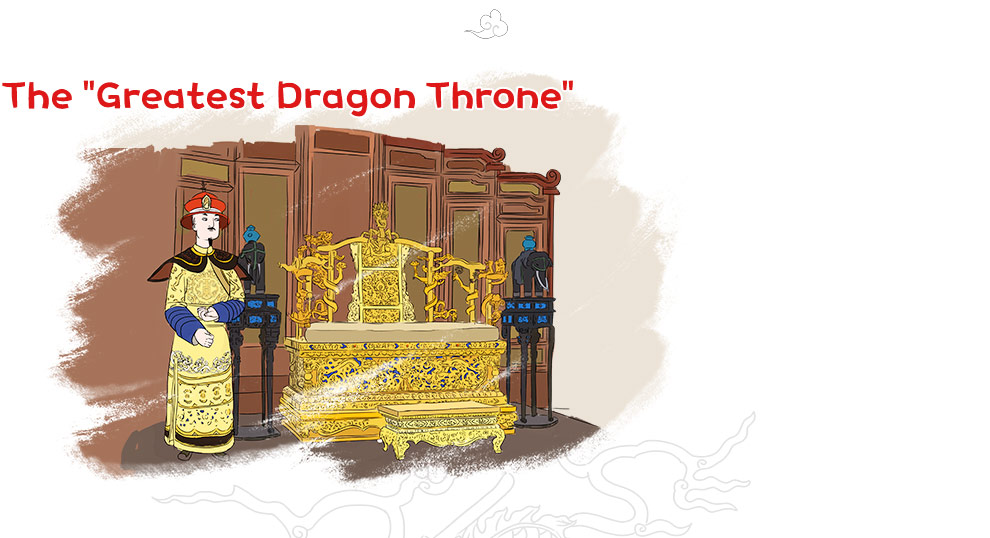
The “Greatest Dragon Throne” is the gold-lacquered, dragon-carved throne that stands majestically in the Hall of Supreme Harmony in the Palace Museum. It radiates a brilliant golden light, and as seen in historical dramas, Qing emperors sat upon it to preside over enthronement ceremonies and major state events, receiving homage from civil and military officials and foreign envoys.
As the emperor's seat, the dragon throne was crafted with the finest materials and exquisite craftsmanship. Made from the rarest golden nanmu wood, the throne has a curved back with intricate carvings of thirteen lifelike dragons. In ancient times, the dragon was an exclusive symbol for the imperial family. Behind the throne stands a huge, golden screen adorned with dragon carvings, flanked by ritual objects such as bronze cranes and incense burners, creating an imposing, resplendent atmosphere in the hall.
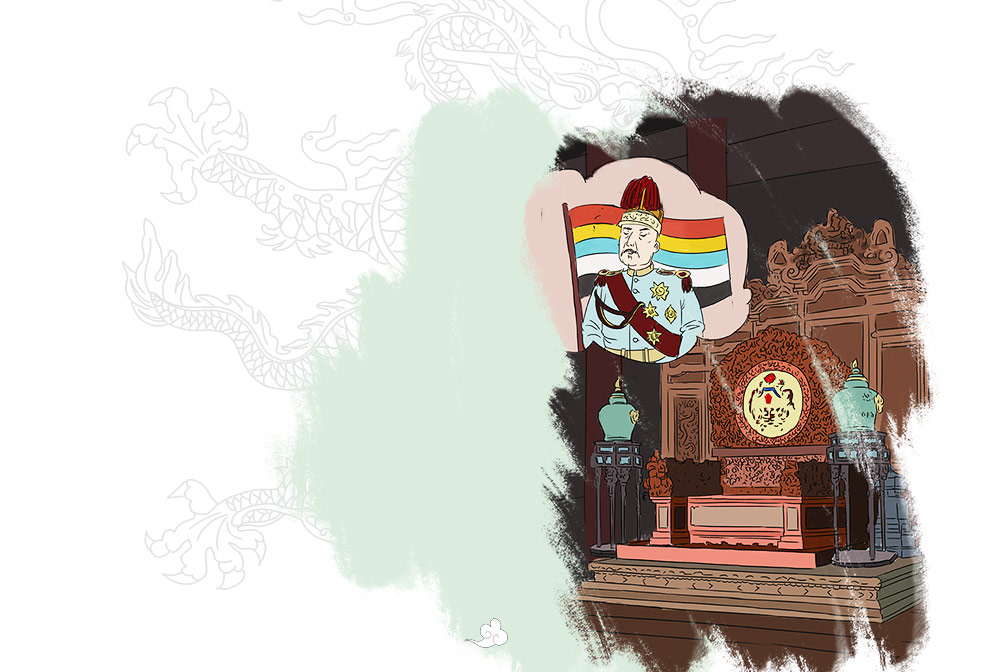
This dragon throne, crafted during the Ming dynasty (1368–1644) and used throughout the Qing dynasty (1644–1911), went missing for nearly half a century. How did this happen?
In 1915, Yuan Shikai (1859–1916) seized power and declared himself emperor. He replaced the dragon throne in the Hall of Supreme Harmony with a hybrid chair of Chinese and Western styles, with an embroidered white satin imperial emblem bearing the words " Empire of Yuan Shikai" on its back. Over time, the satin deteriorated, revealing straw stuffing within.
In 1947, the Palace Museum sought to restore the Hall of Supreme Harmony to its original appearance and removed Yuan’s "embroidered straw chair", intending to replace it with a Qing-era throne. However, none of the selected thrones fit well with the large dragon screen behind them, nor did they suit the grandeur of the hall. You may wonder, where did the "Greatest Dragon Throne" go? Was it still retrievable?
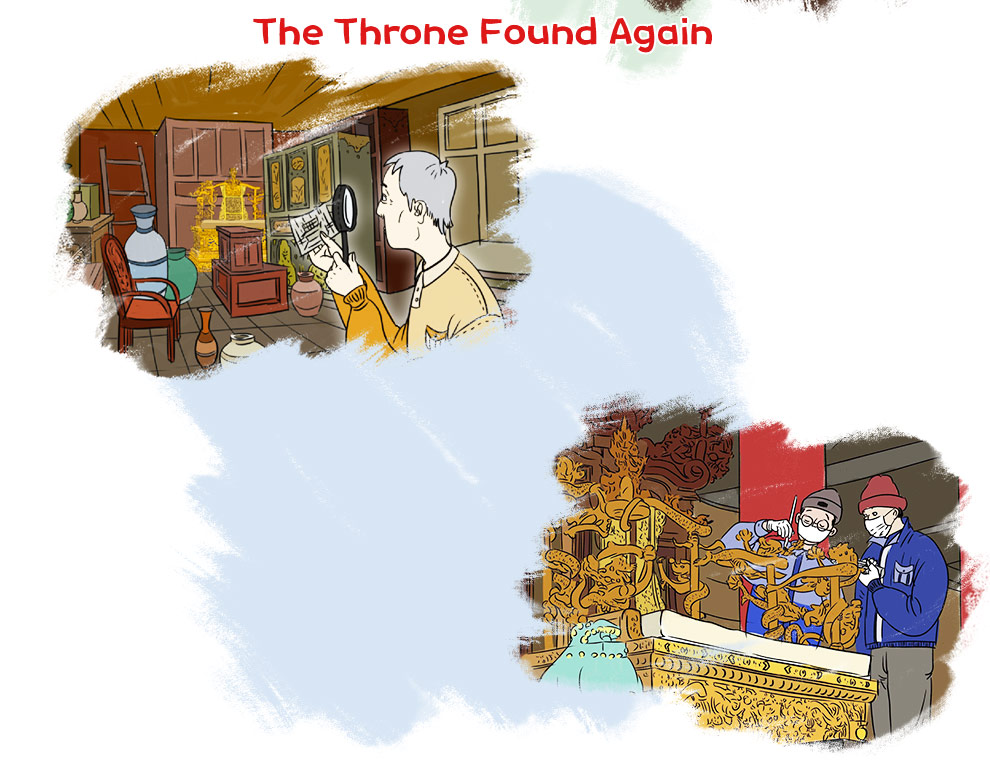
Thankfully, the dragon throne was rediscovered by Mr. Zhu Jiajin (1914–2003), an expert on cultural relics and Qing history.
In 1959, Zhu Jiajin located the damaged dragon throne in a warehouse of broken furniture by comparing it to an old photograph of the original Hall of Supreme Harmony.
In 1963, the Palace Museum decided to restore the throne. After 934 days of meticulous work by experts and restorers, the throne regained its former glory and returned to the Hall of Supreme Harmony.
In addition to the dragon throne in the Hall of Supreme Harmony, the Forbidden City preserves a variety of other thrones. Now a museum, the Forbidden City offers visitors the chance to see these thrones, once reserved for the emperor. On your next visit, consider playing the role of a smart tour guide and sharing the fascinating tale of the throne’s disappearance and rediscovery!
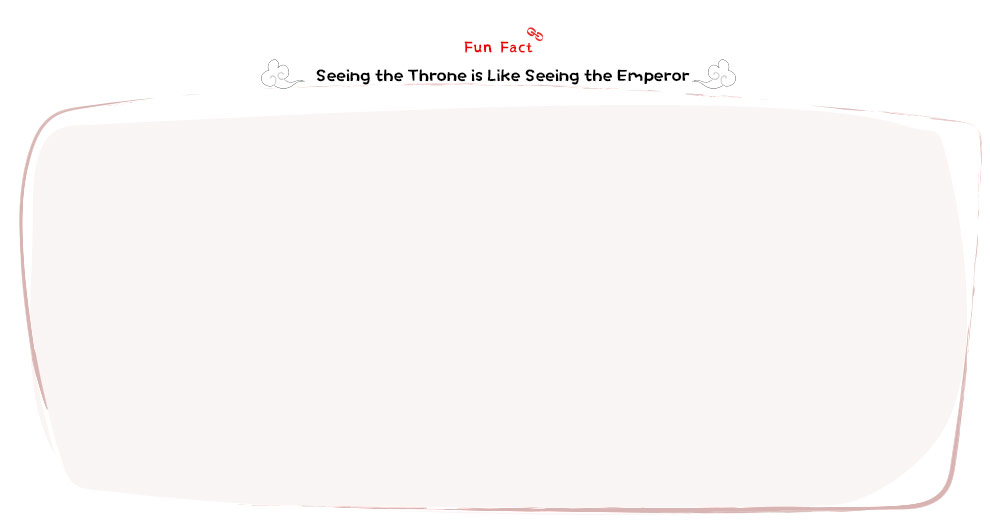
The dragon throne was the emperor’s imperial seat, crafted from precious materials with intricate designs. The term “throne” is said to have originally come from Buddhism and was not initially associated with the imperial family. From the Song (960–1279) and Ming dynasties onward, "throne" gradually became synonymous with the emperor’s exclusive seat, of which the design and name exuded an air of supremacy and superiority.
By the Qing dynasty, the authority symbolised by the throne became even more pronounced. It is said that when Emperor Yongzheng (r. 1722–1735) first ascended the throne, he noticed a newly arrived eunuch sweeping the floor and boldly walking past the throne with his head held high and broom in hand. This greatly angered the emperor, as he felt the eunuch lacked proper decorum. Subsequently, Emperor Yongzheng issued an edict:"Wherever there is a throne, those passing by must do so with a heart of reverence, moving quickly and humbly to adhere to proper etiquette." This meant that eunuchs serving the emperor, regardless of rank, were required not only to devote themselves wholeheartedly to their master but also to show deference to the throne he occupied. They were expected to bow their heads and hurry past the throne as a mark of respect.
